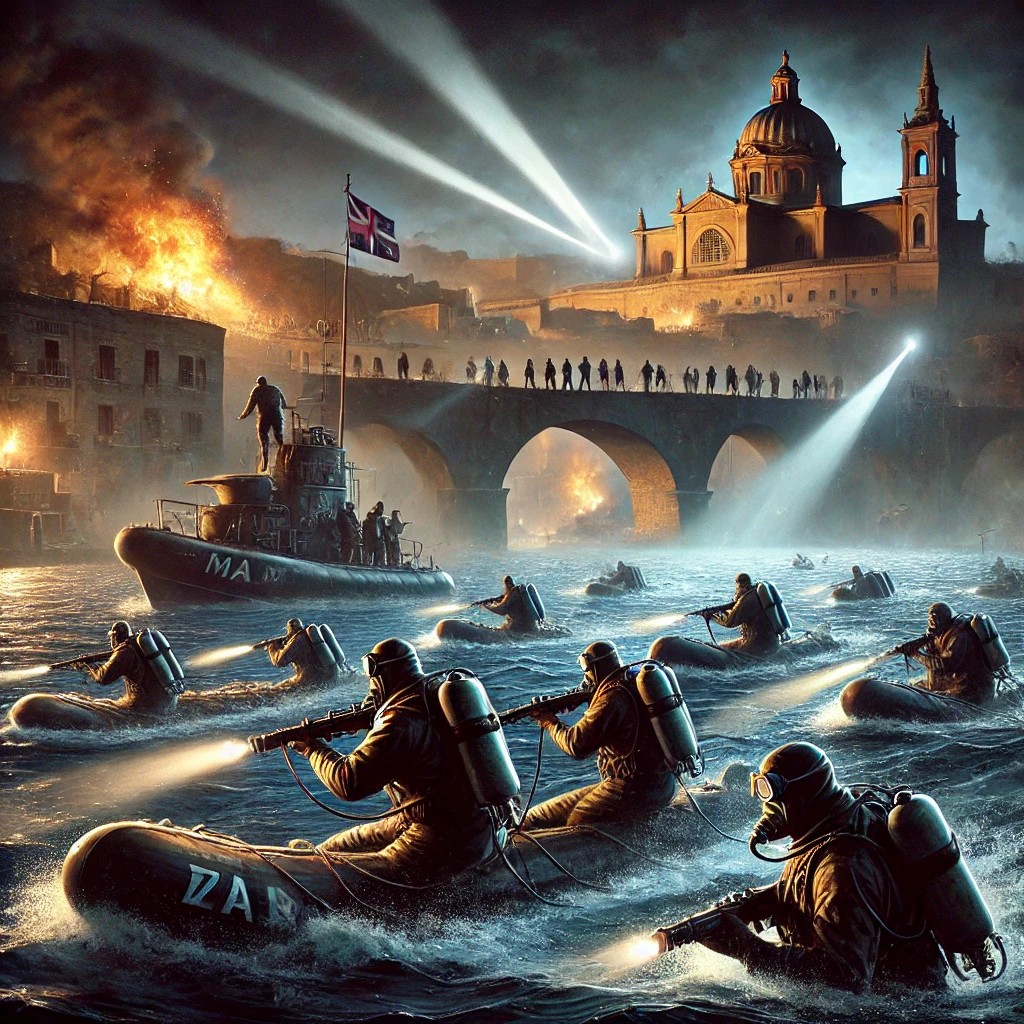The Failure of the 10th MAS Flotilla in Malta (1941)
When the Italians attempted to invade Malta

At the height of the Second World War, Fascist Italy attempted one of the most daring and dangerous attacks in its military history. Malta, a strategic stronghold of the Royal Navy, represented a crucial obstacle for the Axis in the Mediterranean. The 10th MAS Flotilla, an elite unit of the Regia Marina, planned a raid to destroy British ships docked in Valletta harbour using slow torpedoes (‘Pigs’) and explosive barges - AI generated image
At the height of the Second World War, Fascist Italy attempted one of the most daring and dangerous attacks in Italian military history. Valletta, Malta, was a key stronghold of the British war effort, serving as a supply and support base for the British fleet. The Italian army attempted to turn the tide of the Battle of the Mediterranean by planning an operation that involved the destruction of key British ships while they were still docked in Valletta harbour. An elite unit, the 10th MAS Flotilla, planned an operation with the famous amphibious assault craft ‘the Pigs’ and explosive boats to hit the Royal Navy in the heart of its base.
On 26 July 1941, in the darkness of the night, the elite forces began the operation, launching from an Italian submarine off the Maltese coast. But the raiding force had not reckoned with the British defence systems, which were highly advanced and equipped with radar, searchlights and machine gun emplacements. The British opened fire and the raiders threw themselves into a desperate race towards the harbour mouth to blow up the boats and do some damage, but it was to no avail. The motorboat led by Lieutenant Razzauti was hit and exploded before reaching the harbour, while a second craft, a slow-moving torpedo, was led by the famous commander Teseo Tesei, who headed towards one of the piers of the fortress of Sant'Elmo in a desperate attack, blowing himself up with his craft without, however, doing any significant damage.
Within a few hours, the operation had already turned into a disaster, all the boats used by the Italian raiders were sunk and the few raiders that did make it into the harbour failed to do any damage to the British but were killed or imprisoned. The total toll was 6 dead and 5 prisoners for the Italian troops and no casualties for the British.
The attack has remained famous in the memory of the Maltese as it constituted the first land assault on the island in almost four centuries of history, a profound failure for the Italian army.
Erminio Bagnasco Longo. Storia della X Flottiglia MAS 1943-1945. Mursia, Milano, 2019.
Erminio Bagnasco Longo. Inferno sul mare: la battaglia aeronavale nel Mediterraneo 1940-1943. Mursia, Milano, 2015.
Toniatti Francesco
Master of Arts in International Relations - University of Leiden
Master of Arts in History and Oriental Studies - University of Bologna
Former History Teacher - International European School of Warsaw
2025-07-21
Francesco Toniatti
